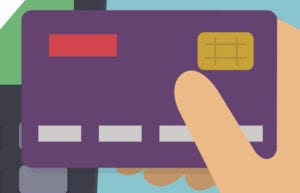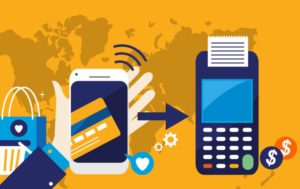The Financial ID Briefing brings you top highlights from the world of biometrics, mobile ID and finance. It is powered by FindBiometrics and Money20/20.
Biometric Payment Cards Fight Social Benefits Fraud
 Biometric payment cards are the new hot market in fingerprint sensors and mobile biometrics technology, spurring intense competition between biometrics vendors aiming for high profile credit card integrations as financial services providers aim to stay competitive with convenient and secure mobile wallet technology. But fingerprint sensor sporting smart cards have more benefits to offer than a simple and secure user payment experience according to Safran Identity & Security Payment Marketing Director Jesper Domargård.
Biometric payment cards are the new hot market in fingerprint sensors and mobile biometrics technology, spurring intense competition between biometrics vendors aiming for high profile credit card integrations as financial services providers aim to stay competitive with convenient and secure mobile wallet technology. But fingerprint sensor sporting smart cards have more benefits to offer than a simple and secure user payment experience according to Safran Identity & Security Payment Marketing Director Jesper Domargård.
On-card fingerprint authentication offers and elegant solution to fight social subsidy fraud, asserts Domargård in a Safran blog post. If a biometric card is issued to a citizen eligible for social benefits like pension, and the funds are allocated directly to said card, “the biometric authentication guarantees that the payment is performed by no one other than the alive eligible (and still alive) holder,” he writes.
The anti-fraud use case of a biometric payment card further underlines the value of the emerging solution as big names in finance and identity tech are quickly staking out their territory in the smart card market.
Android Pay Lands in Russia
 Android Pay has finally landed in Russia, joining the mobile payments space already shared by rivals Samsung Pay and Apple Pay. Russian Android Pay launched last week with the support of 15 banks: AK BARS, Alfa-Bank, B&N Bank, MTS Bank, Otkritie, Promsvyazbank, Raiffeisen Bank, Rocketbank, Russian Standard Bank, Russian Agricultural Bank, Sberbank, Tinkoff Bank, Tochka, VTB24 and Yandex.Money.
Android Pay has finally landed in Russia, joining the mobile payments space already shared by rivals Samsung Pay and Apple Pay. Russian Android Pay launched last week with the support of 15 banks: AK BARS, Alfa-Bank, B&N Bank, MTS Bank, Otkritie, Promsvyazbank, Raiffeisen Bank, Rocketbank, Russian Standard Bank, Russian Agricultural Bank, Sberbank, Tinkoff Bank, Tochka, VTB24 and Yandex.Money.
Announcing the mobile wallet’s Russian launch, Google VP of Product Management, Payments, Pali Bhat, emphasized the wallet’s security in comparison to plastic cards. “Because Android Pay doesn’t share your actual credit or debit card number with stores, it’s safer than using a plastic card,” wrote Bhat on Google’s blog, The Keyword. “If your phone is ever lost or stolen, you can use Find My Device to instantly lock your phone from anywhere, secure it with a new password, or wipe it clean of your personal information.”
The Russian Android Pay announcement came shortly after Google announced expanded functionality for its payments platform, launching a Google Payment API for developers.
Wearable FinTech Coming To UAE and Beyond
![]() Wearable payments may not seem as popular as paying with your phone or an NFC enabled card, but a new partnership between UAE Exchange and Oberthur Technologies might change that in the United Arab Emirates. The financial institution and the mobile identity company teamed up, combining UAE Exchange’s prepaid payment card with Oberthur’s FlyBuy MiniFOB, which can be attached to a wide range of accessories and, in turn, enable contactless payments via clothing.
Wearable payments may not seem as popular as paying with your phone or an NFC enabled card, but a new partnership between UAE Exchange and Oberthur Technologies might change that in the United Arab Emirates. The financial institution and the mobile identity company teamed up, combining UAE Exchange’s prepaid payment card with Oberthur’s FlyBuy MiniFOB, which can be attached to a wide range of accessories and, in turn, enable contactless payments via clothing.
This collaboration on wearable contactless payments is indicative of a growing trend in FinTech, namely: the rise in wearable payments. While the Apple Watch launched with Apple Pay functionality, and since then smartwatch payments have been generally available to smartwatch users, wearable payments are still waiting for a mainstreaming moment. But new pilot programs, like the one recently concluded at Columbus School in Medellin, Colombia, are showing enthusiasm for wearable transactions at a time when biometric wearable authentication is slated to pick up steam.


Follow Us